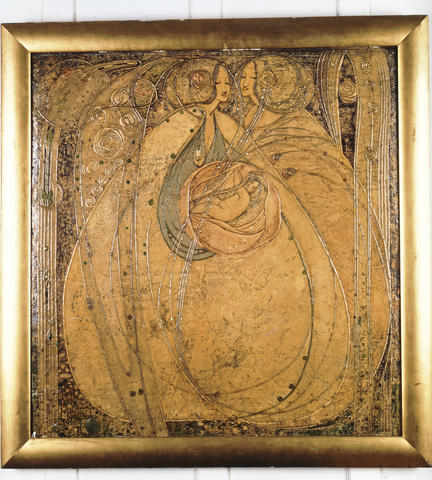License:
 This image is provided under a Creative Commons BY-NC-SA License. You can download this version for private study or non-commercial use. Our terms, conditions and copyright policy (PDF) contains further information about acceptable usage. If you are seeking permission to publish, please contact us ›
This image is provided under a Creative Commons BY-NC-SA License. You can download this version for private study or non-commercial use. Our terms, conditions and copyright policy (PDF) contains further information about acceptable usage. If you are seeking permission to publish, please contact us ›
Please click here if you would like to request a larger, high-resolution version ›
Key Information
Reference code
Title
Date(s)
- 1901 (Creation)
Level of description
Part
Extent
1 image
Content and Structure
Scope and content
Appraisal, destruction and scheduling
Accruals
System of arrangement
General Information
Name of creator
Biographical history
Margaret Macdonald was one of the most gifted and successful women artists in Scotland at the turn of the century. Her output was wide-ranging and included watercolours, graphics, metalwork and textiles. Arguably her greatest achievements were in gesso, a plaster-based medium, which she used to make decorative panels for furniture and interiors.
Macdonald was born in England and came to Glasgow with her family around 1890. She enrolled as a day student at Glasgow School of Art, recording 9 Windsor Terrace, Glasgow as her home address.
GSA records reveal a successful school career:
1891: Local exam, advanced, Stage 23c, ornamental design, second class
1891: Local exam, 2nd grade certificate, freehand drawing, 2nd class
1891: Local exam, 2nd grade certificate, model drawing, 2nd class
1891: Local prize, Design section, majolica, 1st prize, 10/-
1891: Local exam., advanced, Stage 9a, anatomy, 1st class
1892: Local exam., advanced, Stage 8c, drawing from life, 2nd class
1892: Local exam, advanced, composition from given figure subject, 2nd class
1894: Local prize, Design section, stained glass design, 2nd prize
It was at GSA she met Mackintosh and Herbert McNair. Leaving the School in the mid 1890s, she set up an independent studio in the city with her sister, Frances. Margaret Macdonald The sisters worked together until Frances’s marriage and departure for Liverpool in 1899. Mackintosh and Macdonald married in 1900.
Collaboration was key to Margaret Macdonald’s creativity. The partnership with her sister in the 1890s produced metalwork, graphics, and a series of book illustrations. Her collaboration with Mackintosh comprised primarily the production of panels for interiors and furniture, notably for the tea rooms and The Hill House. The precise nature of their partnership is difficult to define, because little documentation survives. However it is certain that Macdonald played an important role in the development of the decorative, symbolic interiors of the early 1900s, including the House for an Art Lover portfolio, the Rose Boudoir, Turin and the Willow Tea Rooms.
Ill health and the strain of Mackintosh’s declining career contributed to a decline in her own output and no work after 1921 is known. Macdonald died in London in 1933, five years after her husband.
Archival history
Custodial history
Physical Description and Conditions of Use
Conditions governing access
Conditions governing reproduction
Language of material
Script of material
Language and script notes
Physical Description
Finding aids
Related Material
Existence and location of originals
Existence and location of copies
Related materials
Notes area
Alternative identifier(s)
Keywords/Tags
Subjects
Place access points
People and Organisations
Genre access points
Status
Level of detail
Processing information
Language(s)
Script(s)
Sources
Digitised item metadata
Filename
MC_A_0002_v0001.jpg
Latitude
Longitude
Media type
Image
Mime-type
image/jpeg


